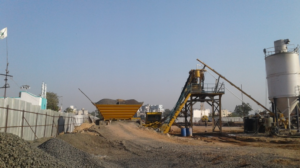
Recycled Concrete:
“A long myth that concrete cannot be reused or recycled gets a nod and comes as a boon to real estate market.”
Concrete is everywhere. It is the second most consumed material after water and it shapes our built environment. Homes, schools, hospitals, offices, roads and runways all make use of concrete. Concrete is extremely durable and can last for hundreds of years in many applications. As part of the Cement Sustainability Initiative (CSI), the cement industry has been looking at recycling concrete as a component of better business practice for sustainable development.
Even though concrete is a relatively harmless waste, the cement industry encourages initiatives to recover this resource and minimize waste. Recycling or recovering concrete has two main advantages: (1) it reduces the use of new virgin aggregate and the associated environmental costs of exploitation and transportation and (2) it reduces unnecessary landfill of valuable materials that can be recovered and redeployed. There is, however, no appreciable impact on reducing the carbon footprint (apart from emissions reductions from transportation that can sometimes be achieved). The main source of carbon emissions in concrete is in cement production (the cement is then added to aggregates to make concrete).
Twice as much concrete is used in construction around the world than the total of all other building materials, including wood, steel, plastic and aluminum. Recovered concrete from C&DW can be crushed and used as aggregate. Road sub-base is the predominant use. It can also be used in new concrete. Recycling concrete reduces natural resource exploitation and associated transportation costs, and reduces waste landfill. However, it has little impact on reducing greenhouse gas emissions as most emissions occur when cement is made, and cement alone cannot be recycled.
Concrete is an excellent material with which to make long-lasting and energy-efficient buildings. However, even with good design, human needs change and potential waste will be generated. Concrete is broken down into smaller blocks or aggregate for use in a new life. In this report “recycled concrete” refers to concrete that has been diverted from waste streams and reused or recovered for use in a new product. Concrete recycling is a well established industry in many countries and most concrete can be crushed and reused as aggregate. Existing technology for recycling by means of mechanical crushing is readily available and relatively inexpensive.
Content and photograph – Architect Pooja Jaiswal
Author Ar. Pooja Raval